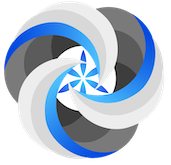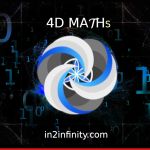Hi, my name is Colin Power from in2infinity. And this week we’re going to be continuing talking about all about quantum mathematics and computing. Just because it’s fairly interesting subjects people seem to be quite interesting in computers nowadays and technology industry and all that stuff.
So, in this broadcast, what we’re looking at, we’re going to just combine a little bit of knowledge from the last broadcasts we had. We remember we talked about the multi voltage bit processing. Yep. And before that we had a little bit of something about how we can use addresses to assign different base number systems as well. So, what you get there, if you think about it is a base system, one system and a base system and another system. So the one is the hardware system and one is a memory system. So CPU system can be translated into a base 10 Now, and so can a memory postage system. So we use the numbers ABCDE F, G, for the memory function, if you like, just as but it doesn’t have to be 12345 call it now. And what we can see then is that we have an interface between the dress function and the types of CPUs, yeah, the CPUs, remember, were divided into two they will divide into the ones that calculate the infinity or before the decimal point and the ones that counted infinity after the decimal point. And that was manipulated by two functions. One function was a mathematic with those mathematic numbers. And that sort of acts as a kind of poster postman. So I like to post the post numbers into different types of base system addresses. And so that actually, we can form them proper mathematics, right? But actually, obviously, if the thing itself is composed of CPUs, then we can, we can compare a different time number as well. And that allows us to have fourth dimensional mathematics. So what we see is then is that each one of these Rs knew the super cool are the are the reciprocal CPU and the whole number CPU, if you like, that calculates it from types of infinities, that it will have a third party calculation which will be the number function of time. And by doing that, what we can do is we can start to start to compare things in fourth dimension and make extremely deep quantum calculations far deeper than the mathematics we’re used to. Some of that stuff’s a little bit sort of complicated at the human level, because computers can do things very fast and make comparisons of vectors in a way that we can’t. But what we can do is we can model these things on a fourth dimensional calculator So we can, and we can generate three dimensional images using those things. And so that we can find, like sweet points, shall we say, within the within the construct such as the tetrahedron below the geometric function, which is where we get into geometric mathematic is when we translate fourth dimensional mathematic, from a vector based system into a three dimensional geometric system of number. And actually a fourth dimensional but we won’t get to that just yet. So, what we can say is, then, is that we have the address, meet the address managers, we’ve got to that point, is actually now comprised of something a little bit more complex than just a normal address manager at that stage if we get to that special kind of CPU and everything like that. And so what that means is that the, if you think about it, when we’re doing these calculations, really, you know, let’s say, you know, we can turn each number, let’s say, we know that in address a, let’s call it that there was one or two. So that becomes a, doesn’t it? Yeah. A, and if it’s one, it’d be one. Yeah. And then if we have the number, you know, the address B, let’s call it B for now. And that will either be three or four, and x as a one or zero. So if it’s a, if it’s a, if it’s an even number, we should call it really one, shouldn’t we? And if it’s an odd number, we can call it two. Now actually, I like the range based system slightly differently to the way that you know, in other words, you can start with a zero, can’t you or you can start with a one. And if we start with a one, we get a different type of base. system, we call that because it’s like the first, second, third, fourth, fifth. So we can use that function in the CPU. And then we can use the other function, which is the address posted management system for the for the cardinal numbers. And we can start those with 12345678. Carter. Yep. So that way we can make we require two types of numbers system built into the hardware, the function Yeah. And that’s going to be the basis of our quantum computing as well. And so What we do then is when we compare sort of numbers from the Cardinals and the ordinals we’re really comparing the number from the CPU you know the the user uses the voltages the voltage differences because those voltages variants within the CPU and then we also are using the postage function of the memory the ROM memory that we’re going to we’re going to code into wrong memory to say that that equals that they were that yep so we got a base system of numbers and then we’ve got that calculator which is now going to function between the CPU on different levels to provide the Calculate function to the memory codes to the memory codes and then we’re going to have The another memory bank which is going to be RAM yep which will then store the result and then we can take that result and feed it back through the quantum compressor and store On the harddrive so there you go so that means We can in a way what you could say is you Let’s say the computer process process of the It works and everything like that what we’re going to do is we’re going to divide it into a more quantum market texture so it’s like you know imagine you’ve got your vegetables in the fridge you can To take the vegetables decompress them in a geometry here Bringing they’re going to be in a geometric form And then we’re going to act in a quantum manner on that on that number set And then perform extremely quick calculations just to that effect The way the system works and then we’re going to rewrap that back in back and decompose it back into history metric form and then we’re going to feed it back into the hard drive it’s going to re re recomposed that back as the new data AI economy overwrite the data on the hard drive so that’s how it kind of works yeah so just wanted So now that was just the kind of summary to recompile everything we’ve talked about fourth dimensional math metrics how it works within computer science and I think there’s enough That’s probably going to be the end of our broadcasts on that particular subject So just out of that you know we do have The within our technology now because we have all of these Quantum codes we have an amazing compression ratios that are coming out on my end and I don’t know what he’s looking Like from the sides of the computer scientists but yeah be interesting to know so We’d like to put our message to the computer scientists out To do some of the math and crunch IP come back with us What’d you think you know the speed of a computer would be under the sun Architecture you know we’ve made a suggestion and you know We’re now we’re just putting that suggestion out and What it allows to do is fourth dimensional mathematics and obviously you can You know may build a fourth dimensional mathematical calculator When an Excel spreadsheets I’m sure some of you coders can do a better job To me I’m not a coder I’m just a mathematic Remember that yeah but I’m just giving you the maths to it allow you to do stuff differently also because I’m quite into my elements and things like that You know when we get really going with this stuff I can begin maybe to show you how we You can use other elements apart from silicon to start forming These transitions she gets really exciting you know once we understand how the atomic function is working properly any Wait That’s enough for me yeah for this time we might do Something on chemistry at some point and the electrochemistry so that people can understand you know the function of silicon various stuff like that within the atomic fabric of timespace In the meantime remember we do have a great diction on the krypton atom as be Gymboree nought point eight one pico metres in radius rather than a naught point eight seven is predicted By the ball model and we’re just waiting for scientists to confirm that result and once they do then we’ll be more sure of whether you know the atomic The atomic theory that we’ve come up digit to the atomic geometry theory it can be more substantiated and in which case we may look at you know how we might apply that to the electromagnetic function of computers Thank you very much and my name is been calling power from into infinity Do check out more on into infinity.com where you can find out loads of stuff about all Tim’s numbers and all that sort of stuff this great website and you come down and check it out and yeah can drop us a line and we try and get back to your questions try make broadcasts and answer any questions that come up that’s all for today Thank you very much and have a great day


